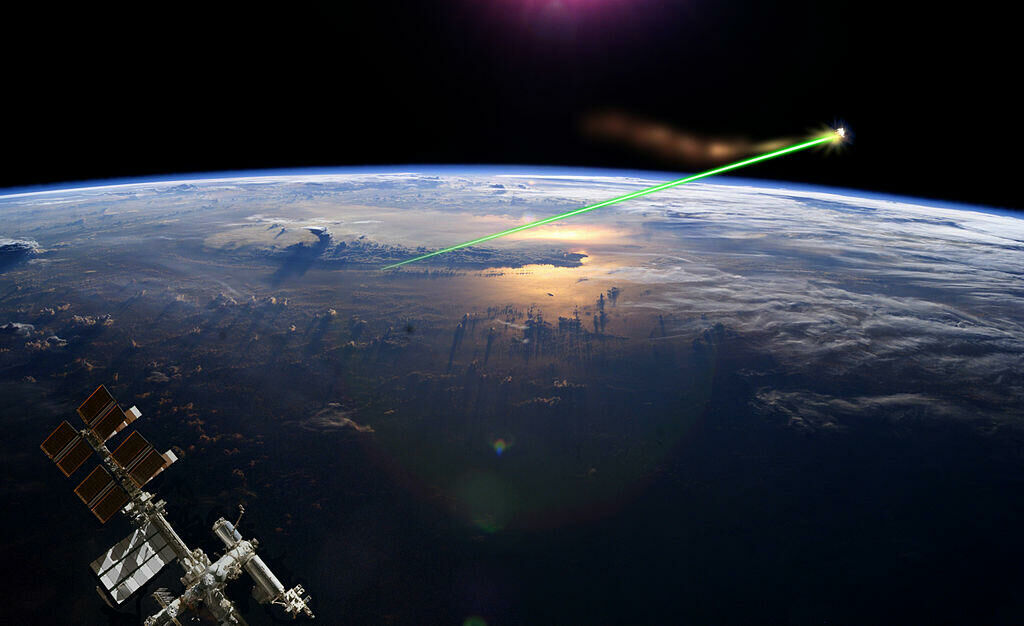Install the app
How to install the app on iOS
Follow along with the video below to see how to install our site as a web app on your home screen.
Note: This feature may not be available in some browsers.
You are using an out of date browser. It may not display this or other websites correctly.
You should upgrade or use an alternative browser.
You should upgrade or use an alternative browser.
Avaruus
- Viestiketjun aloittaja Juke
- Aloitus PVM
Rambo
Majuri
Kirjaudu sisään • Instagram
Tervetuloa takaisin Instagramiin. Katso, mitä kaverisi, sukulaisesi ja kiinnostuksen kohteesi ovat kuvanneet ja jakaneet eri puolilla maailmaa kirjautumalla sisään.
 www.instagram.com
www.instagram.com
tulikomento
Supreme Leader
Tv-kamerat Kuussa.
USA ampui Saksasta nyysityn legendaarisen V2-ohjuksen mukana kameran 75 vuotta sitten – tämä on ensimmäinen avaruudesta otettu kuva
Koelento 24.10.1946 ylsi 105 kilometriin, mutta ei kiertoradalle.
tulikomento
Supreme Leader
Jenkkien ja neukkujen avaruuspukujen vertailua.
rty19
Greatest Leader
Nasan miehitetty kuulento lykkääntyy ainakin vuodella
Artemis 3 -kuulennon on määrä viedä ensimmäistä kertaa myös nainen kuun pinnalle.
Nasa has delayed putting astronauts back on the moon until 2025 at the earliest, missing the deadline set by the Trump administration.
The space agency had been aiming for 2024 for the first moon landing by astronauts in a half century.
In announcing the delay on Tuesday, the Nasa administrator, Bill Nelson, said Congress had not provided enough money to develop a landing system for its Artemis moon program and more money was needed for its Orion capsule. In addition, a legal challenge by Jeff Bezos’s rocket company, Blue Origin, stalled work for months on the Starship lunar landing system under development by Elon Musk’s SpaceX.

Nasa bumps moon landing back to 2025 at the earliest
Agency says funding issues, along with delays tied to Bezos legal challenge, will push back first landing in a half century
Bloody bezos

International isolation experiment SIRIUS-21 to simulate the flight and landing on the moon started on Thursday in Moscow, a Sputnik correspondent reported from the Institute of Biomedical Problems (IBMP) of the Russian Academy of Sciences.
Six people went on a conditional trip to the moon: Oleg Blinov, an instructor of the Cosmonaut Training Center; Viktoria Kirichenko, a surgeon at the IBMP; Ekaterina Kariakina, ex-flight attendant of the Nordwind airline, and now a junior researcher at the Institute of International Biological Problems; William Brown, a US bachelor of Russian Language and Literature; Ashley Kowalski, a representative of the command US space systems; and UAE test astronaut Saleh Omar Al Ameri.
They will have to live together for 240 days in a simulator of a spacecraft - a ground-based test complex in Moscow. The task of the "crew" is to simulate the flight, landing on the Moon and work on its surface.
The SIRIUS project (Scientific International Research In Unique Terrestrial Station) is carried out jointly by IBMP and NASA in cooperation with space agencies of Russia, ESA, Germany, France, the United Arab Emirates, space industry enterprises with the participation of experts from Russia, the US, Germany, France, Italy, Belgium, Japan, Canada and other countries.
SIRIUS includes a series of isolation experiments. Experiments have already been carried out with a duration of 17 days in November 2017 and four months in 2018-2019. Until 2028, it is planned to conduct three year-long experiments. The first of them will take place in 2022-2023.

SIRIUS-21 to simulate flight to Moon starts in Moscow
Moscow (Sputnik) Nov 05, 2021 - International isolation experiment SIRIUS-21 to simulate the flight and landing on the moon started on Thursday in Moscow, a Sputnik correspondent reported from the Institute of Biomedical Problems
www.moondaily.com
NASA's Mars helicopter Ingenuity has flown for the 15th time on Mars, starting a journey back to its starting point for future missions in a new direction.
The latest flight, over the weekend, was relatively short -- at just 128 seconds -- and was designed in part to further test flight conditions at Jezero Crater now that summer has arrived.
"Ingenuity opportunistically took images of science interest and they'll be processed soon," NASA posted on Twitter.
Flight controllers plan a series of flights in coming weeks to send the Mars helicopter Ingenuity back to where it began its adventure near the Perseverance rover's landing site.
"Ingenuity is ready to begin the journey back to the Wright Brothers Field at the Octavia E. Butler landing site, before venturing beyond," NASA Ingenuity team leader Teddy Tzanetos said earlier in a blog post on NASA's website.
Wright Brothers Field is what NASA named the location of Ingenuity's first five flights that demonstrated such a craft could fly in the thin Martian atmosphere.
Since then, NASA has used Ingenuity to scout for its big buddy on Mars, the Perseverance rover. Both robotic explorers were launched together from Florida n July 2020.
The helicopter generally has flown ahead of the rover to photograph routes and interesting rocks Perseverance could sample with its drill.
Ingenuity's total flight distance is approaching 10,000 feet, or close to 2 miles, but sometimes it has flown a circuitous route to capture images, so the journey back to the starting point will be far less distance than the trip out.
The rover and helicopter went south from their landing site to investigate some outcrops, but NASA now wants to explore north and west of the starting point. The mission is focused on finding possible signs of ancient life.
Once Ingenuity and Perseverance return to their landing site, the tiny, 4-pound drone will "join Perseverance in the trek north ... before traveling west to reach the Jezero ancient river delta."
NASA also is preparing a flight software upgrade which "will potentially enable new navigation capabilities onboard," according to Tzanetos' blog post.

NASA sending Mars helicopter back to where it all started
Washington DC (UPI) Nov 8, 2021 - NASA's Mars helicopter Ingenuity has flown for the 15th time on Mars, starting a journey back to its starting point for future missions in a new direction.
www.marsdaily.com
Mars kopterista on kehittynyt apuväline mönkijälle. Voitte uskoa että parannettu versio tulee seuraavan mukana. Itse lisäisin tuohon maahan laskettavat radiomajakat, kantomatkan lisäämiseksi ja kopterille oma base-station, missä se voisi latailla kaikessa rauhassa hiekkamyrskyjen lomassa.
rty19
Greatest Leader
Mielenkiintoinen uusi laukaisujärjestelmä josta 1. testi on nyt tehty. Voisi olla hyödyllinen myös kuun pinnalta toimittaessa missä ilmakehä ei aiheuta ongelmia.
TM:n juttu suomeksi
 tekniikanmaailma.fi
tekniikanmaailma.fi
ja videolla englanniksi lisätietoa
TM:n juttu suomeksi
Tekniikan Maailma
ja videolla englanniksi lisätietoa
Mielenkiintoinen uusi laukaisujärjestelmä josta 1. testi on nyt tehty. Voisi olla hyödyllinen myös kuun pinnalta toimittaessa missä ilmakehä ei aiheuta ongelmia.
TM:n juttu suomeksi
Jo tässä koekappaleessa oli 500 g:tä, siellä on astronautin daiju sekaisin.Tekniikan Maailma
tekniikanmaailma.fi
tulikomento
Supreme Leader
Mitenkä ISS tullaan ohjaamaan käytön päätyttyä ilmakehään.
rty19
Greatest Leader

BREAKING ISS astronauts forced to board Crew Dragon and Soyuz to prepare for a possible evacuation
The United States said Monday it was investigating a “debris-generating event in outer space” after astronauts on the International Space Station were forced to prepare for a possible evacuation. It came amid unconfirmed reports that Russia had carried out an anti-satellite weapon (ASAT) test —...
 www.airlive.net
www.airlive.net
Kaukaa haettua tuo riski asemalle kun katsoo radat, useamman kymmenen asteen ero inklinaatiossa. Asema voi myös muuttaa rataansa jos jotain havaitaan.
BREAKING ISS astronauts forced to board Crew Dragon and Soyuz to prepare for a possible evacuation
The United States said Monday it was investigating a “debris-generating event in outer space” after astronauts on the International Space Station were forced to prepare for a possible evacuation. It came amid unconfirmed reports that Russia had carried out an anti-satellite weapon (ASAT) test —...www.airlive.net
Muita ongelmia tuosta romusta saattaa toki syntyä.
rty19
Greatest Leader
Eikös sellaisen roinan pitäisi pikkuhiljaa laskeutua lähemmäs maata? Jos ohjuksella on osuttu vanhaan satelliittiin luulisi että räjähdyksessä sirpaleita lentelisi vähän joka suuntaan. Miten niistä voi tietää minkälaisia kappaleita missäkin viilettää, millä nopeudella jne. Ja siitä laskea milloin olisi uhka lähempänä maata lentävälle ISS-asemalle?Kaukaa haettua tuo riski asemalle kun katsoo radat, useamman kymmenen asteen ero inklinaatiossa. Asema voi myös muuttaa rataansa jos jotain havaitaan.
Muita ongelmia tuosta romusta saattaa toki syntyä.
Kyllähän se laskeutuu, ja lisää tietoa radasta kaivattaisiin. Nopea arvioni vaan oli että radat ovat niin kaukana toisistaan että riski avaruusasemalle on mitätön. Se kuitenkin jossain määrin perustui tuon Kosmos 1408:n ilmoitettuun rataan, ja se todennäköisesti oli vanhaa tietoa. Inklinaatiot poikkeavat edelleen niin paljon että törmäys on äärimmäisen epätodennäköinen.Eikös sellaisen roinan pitäisi pikkuhiljaa laskeutua lähemmäs maata? Jos ohjuksella on osuttu vanhaan satelliittiin luulisi että räjähdyksessä sirpaleita lentelisi vähän joka suuntaan. Miten niistä voi tietää minkälaisia kappaleita missäkin viilettää, millä nopeudella jne. Ja siitä laskea milloin olisi uhka lähempänä maata lentävälle ISS-asemalle?
Kohteena olleen satelliitin ja ohjuksen sirpaleet eivät hirveästi poikkea alkuperäisestä radasta, kun kyseessä ilmeisesti oli kineettinen ohjus. Eiköhän tuosta saada lisätietoa lähipäivinä.
fulcrum
Greatest Leader
Korkeus n. 500 kilometriä, eli suurin osa romusta tulee alas muutamassa vuodessa, mutta jotkut yksittäiset kappaleet jotka on ehkä sinkoutuneet ylemmäksi voi kiertää palloa vielä 20 vuotta. Korkeus on samaa luokkaa kuin 80-luvulla amerikkalaisten tekemän ASAT-kokeen, jossa viimeiset tunnetut rojut putosivat alas joskus 2004.
Se kiinalaisten koe takavuosina tehtiin 800 kilometrin korkeudessa, ja sieltä kestää vuosikymmeniä, ellei -satoja että itsestään romppeet putoilevat ilmakehään.
Se kiinalaisten koe takavuosina tehtiin 800 kilometrin korkeudessa, ja sieltä kestää vuosikymmeniä, ellei -satoja että itsestään romppeet putoilevat ilmakehään.

